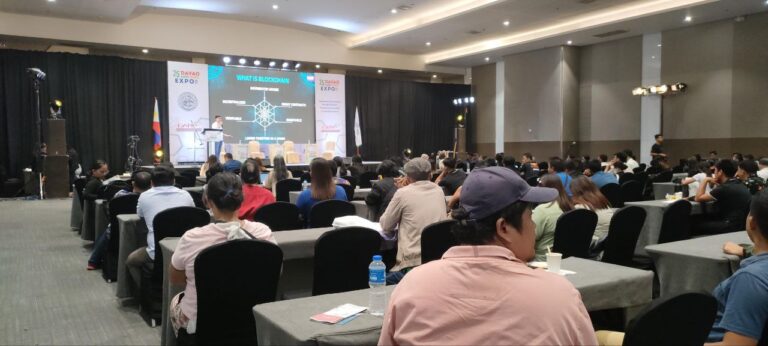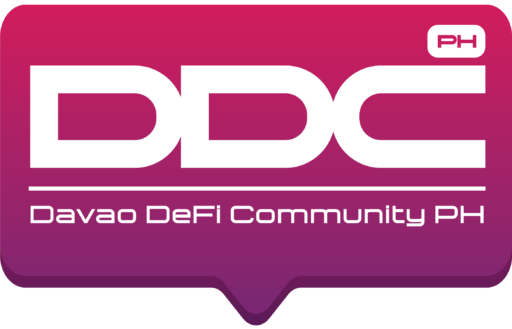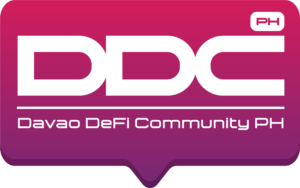Addressing Stigma and Economic Disparities on Building Web3 Communities in the Philippines

ABSTRACT:
This research paper aims to investigate the challenges and opportunities associated with building Web3 communities in the Philippines. Specifically, it focuses on addressing the stigma related to scams in the cryptocurrency and blockchain space and examines the economic disparities between the Philippines and other Asian countries. The primary objectives include:
- Analyzing the current state of Web3 adoption in the Philippines.
- Identifying the reasons behind the stigma associated with Web3 technologies.
- Exploring opportunities for Web3 communities to empower marginalized groups and promote financial inclusion.
- Comparing the economic context of the Philippines with that of more economically advanced Asian nations.
- Providing recommendations and strategies for fostering Web3 adoption in the Philippines.
INTRODUCTION:
In the ever-evolving landscape of technology and innovation, the emergence of Web3 has ignited a global paradigm shift, reshaping the way we interact, transact, and collaborate in the digital realm. While this transformative wave sweeps across nations, it is imperative to recognize the unique significance of studying Web3 within the context of the Philippines. This archipelagic nation, nestled in Southeast Asia, boasts a rich tapestry of culture, a vibrant entrepreneurial spirit, and a burgeoning digital ecosystem. In this introductory section, we elucidate the importance of examining Web3’s impact on the Philippines and provide a brief overview of the current state of Web3 adoption on a global scale.
The Philippines stands at a pivotal juncture, poised to harness the potential of Web3 technologies that encompass blockchain, decentralized finance (DeFi), non-fungible tokens (NFTs), and more. With a population known for its adaptability and technological acumen, the Philippines represents a fertile ground for Web3 innovations to flourish.
Understanding the implications of Web3 in the Philippines is not merely an exercise in technological fascination; it is a quest to unlock new frontiers of economic growth, social empowerment, and financial inclusion. As the country grapples with economic disparities, Web3 technologies offer a conduit for bridging the divide and uplifting marginalized communities. Moreover, the potential for enhanced transparency and trust engendered by blockchain technology can combat issues like corruption and fraud, which have long hindered socio-economic progress.
In the context of financial services, Web3 innovations have the capacity to extend financial access to the unbanked and underbanked, thereby catalyzing economic empowerment. The Philippines, with its vast population of remittance-dependent households, also stands to gain from the efficiency and cost-effectiveness that blockchain-powered remittance services can offer.
This global adoption of Web3 technologies raises essential questions: How will the Philippines embrace these innovations? What challenges and opportunities await its diverse and dynamic population? How can the lessons learned from global Web3 adoption inform strategies for the Philippines? These are the inquiries that compel us to delve deeper into the subject matter at hand. In the following sections, we embark on an exploratory journey to uncover the nuances of Web3 adoption in the Philippines, addressing the unique challenges and prospects that define its digital landscape.
LITERATURE REVIEW:
1. Exploring the Concept of Web3 and Its Relevance to Community-Building
The concept of Web3 represents a paradigm shift from the traditional, centralized web to a decentralized and trustless ecosystem facilitated by blockchain and related technologies. At its core, Web3 emphasizes principles of transparency, autonomy, and peer-to-peer collaboration, which are highly relevant to community-building efforts.
Web3, with its foundation in blockchain technology, enables the creation of decentralized applications (DApps) and smart contracts. These innovations provide communities with tools to interact, collaborate, and transact in ways that were previously unattainable. For instance, blockchain-based voting systems empower communities to engage in transparent and tamper-proof decision-making processes.
Web3 also fosters the emergence of decentralized autonomous organizations (DAOs), which allow community members to collectively manage resources and make decisions. DAOs have the potential to redefine governance structures, making them more inclusive and participatory.
2. Analyzing Existing Literature on the Challenges and Opportunities of Web3 Adoption Worldwide
The literature on Web3 adoption globally highlights a range of challenges and opportunities:
Challenges:
- Regulatory Uncertainty: Many jurisdictions struggle to develop clear and coherent regulations for Web3 technologies, leading to uncertainty and risk for businesses and users.
- Scalability Issues: Some blockchain networks face scalability challenges, limiting their capacity to handle a high volume of transactions quickly and cost-effectively.
- User Education: Web3 technologies can be complex for newcomers to understand and use, necessitating educational efforts to bridge the knowledge gap.
- Interoperability: The interoperability of different blockchain networks remains a challenge, hindering seamless communication and collaboration.
Opportunities:
- Financial Inclusion: Web3 technologies can provide financial services to unbanked and underbanked populations, opening up new economic opportunities.
- Decentralized Finance (DeFi): DeFi platforms offer financial services such as lending, borrowing, and trading without intermediaries, democratizing access to financial products.
- Tokenization: Asset tokenization enables fractional ownership of real-world assets, making investments more accessible and liquid.
- NFTs: Non-fungible tokens (NFTs) revolutionize ownership and monetization of digital content, empowering creators and artists.
3. Reviewing Case Studies from Other Countries with Successful Web3 Communities
Several countries have become exemplars of successful Web3 communities:
- Estonia: Estonia’s e-Residency program is a digital identity program that offers global citizens the opportunity to establish a trusted digital identity and access Estonia’s public and private sector services remotely. The program leverages KSI Blockchain technology to ensure the security and integrity of the digital identities 1. The program has attracted a unique community of entrepreneurs and remote workers who are interested in establishing a business presence in Estonia or accessing the country’s digital services 1.
The e-Residency program has been successful in attracting entrepreneurs from around the world, with over 80,000 e-residents from 174 countries as of October 2021 1. The program has also been used by startups and established businesses to establish a presence in Estonia and access the European Union market 1.
The e-Residency program is an innovative initiative that has helped Estonia establish itself as a leader in digital governance and innovation. It has also helped foster a unique community of entrepreneurs and remote workers who are interested in leveraging Estonia’s digital infrastructure to grow their businesses or access public services remotely
- Switzerland: https://sigtax.com/en/4-reasons-why-zug-became-switzerlands-crypto-valley1. The city has attracted over 380 blockchain companies, including some of the world’s most notable and successful ventures such as Ethereum, Lisk, ConsenSys, and Blockhaus 2. Zug’s success as a blockchain hub can be attributed to its top-ranking research institutes, transparent legal system, low tax rates, and business-friendly environment 1.
Zug’s thriving Web3 community is a testament to its success as a blockchain hub. The Swiss WEB3FEST 2023 is an upcoming event that aims to unite the global Web3 ecosystem under the banner of “Switzerland United” 3. The festival will be held from September 7th-17th 2023 and will feature over 150 preeminent speakers, 50+ exhibitors, and 80+ captivating topics and side events 3. The Swiss WEB3FEST is the ecosystem festival of Crypto Valley and Crypto Oasis and is co-hosted by Dfinity aka The Internet Computer 3. The festival will take place in Zug and Zurich and will showcase the diverse themes that define the Web3 realm such as AI, Blockchain, Cryptocurrencies, Gaming, Sustainability, IoT, Metaverse, NFTs, and beyond 3.
The Swiss WEB3FEST is an excellent opportunity for entrepreneurs and remote workers interested in blockchain technology to connect with like-minded individuals from around the world. It’s also an excellent opportunity to learn about the latest trends in Web3 innovation and collaboration.
https://sigtax.com/en/4-reasons-why-zug-became-switzerlands-crypto-valley
- Singapore: Singapore has been a leader in embracing blockchain technology in various sectors, including financial services, trade, and supply chain management 1. The Monetary Authority of Singapore (MAS) has been actively promoting the use of blockchain technology in the financial sector and has launched several initiatives to support the development of blockchain-based solutions 1.
In supply chain management, blockchain technology can help improve transparency, traceability, and efficiency by providing a secure and tamper-proof record of transactions 2. Singapore has recognized the potential of blockchain technology in supply chain management and has launched several initiatives to promote its adoption 3.
Singapore’s success in embracing blockchain technology can be attributed to its regulatory clarity and supportive ecosystem. The government has taken a proactive approach to promote the development and adoption of blockchain technology, providing a clear regulatory framework for businesses operating in this space 1.
Overall, Singapore’s embrace of blockchain technology has helped position it as a leader in digital innovation and has helped drive growth in various sectors.
https://www.mas.gov.sg/development/fintech/technologies—blockchain-and-dlt
Web3 in the Philippines: An Overview
The advent of Web3 technologies, underpinned by blockchain and decentralized principles, has catalyzed a global technological renaissance. As nations across the world explore the multifaceted dimensions of Web3, the Philippines has emerged as a compelling focal point for the intersection of innovation, community-building, and economic development. In this section, we provide an insightful overview of the current state of Web3 adoption in the Philippines, shedding light on the key players, projects, and initiatives that are shaping the Philippine Web3 ecosystem.
The Current State of Web3 Adoption in the Philippines
The Philippines, characterized by a burgeoning digital economy, youthful demographics, and a vibrant entrepreneurial spirit, is poised to harness the transformative potential of Web3 technologies. Although the adoption of Web3 is in its nascent stages, several promising developments and trends have emerged:
1. Cryptocurrency and Digital Asset Adoption: Cryptocurrencies like Bitcoin and Ethereum have gained considerable traction among Filipinos, with a growing number of individuals investing in, trading, and utilizing these digital assets. Cryptocurrency exchanges and wallet providers have proliferated, facilitating access to cryptocurrencies for both seasoned enthusiasts and novices.
2. Decentralized Finance (DeFi): The concept of DeFi has garnered interest in the Philippines, offering novel financial services such as decentralized lending, borrowing, and yield farming. Filipinos are participating in DeFi protocols, albeit with a degree of caution due to the associated risks.
3. NFTs and Digital Art: The rise of non-fungible tokens (NFTs) has spurred creativity and innovation within the Philippine art and content creation communities. Local artists and content creators are exploring NFT platforms to tokenize and monetize their digital creations.
4. Blockchain Education and Initiatives: Educational institutions, startups, and industry associations are driving awareness and education regarding blockchain technology and Web3 principles. Initiatives include seminars, workshops, and hackathons aimed at nurturing local talent and fostering innovation.
Key Players, Projects, and Initiatives in the Philippine Web3 Ecosystem
The Philippine Web3 ecosystem is characterized by a dynamic array of players, projects, and initiatives that are instrumental in shaping its trajectory:
1. Startups and Entrepreneurs: A burgeoning ecosystem of Web3 startups is emerging, focusing on various aspects of blockchain technology, DeFi, and NFTs. Prominent startups include those developing blockchain-based supply chain solutions, digital identity platforms, and tokenization services.
2. Government Initiatives: The Philippine government has demonstrated a commitment to passing the “Republic Act No. 11293, or the Philippine Innovation Act” that may be an avenue of exploring blockchain technology and its applications. Government-backed blockchain initiatives are exploring use cases in areas such as supply chain management, public service delivery, and land titling.
3. Educational Institutions: Universities across the Philippines are now exploring and opening blockchain courses and collaborating with industry players to bridge the knowledge gap. These institutions are producing a new generation of blockchain developers and enthusiasts.
4. Local Exchanges and Wallet Providers: Homegrown cryptocurrency exchanges and wallet providers are facilitating access to digital assets for Filipinos, contributing to the growth of the local cryptocurrency market.
5. Art and Creativity: Filipino artists and content creators are actively participating in the NFT space, contributing to the global digital art movement and finding new avenues for monetization.

